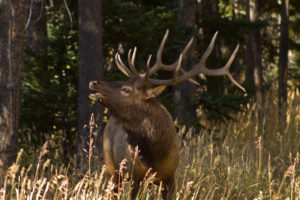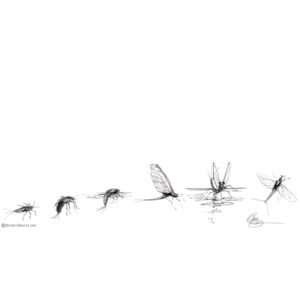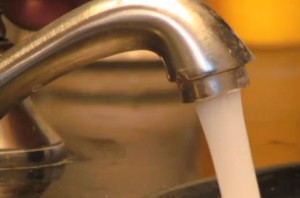The Colorado General Assembly is taking up legislation – HB 17-1321 – to authorize the Parks and Wildlife Commission to have the power to set its own fee rates, up to a specified cap, instead of the Colorado Legislature setting all fees. This action would enable them to increase fishing and hunting license fees in order to provide needed funds to maintain fish and wildlife management and to meet growing demands for habitat conservation and for hunting and fishing access. While the bill provides a needed financial boost to Colorado Parks and Wildlife (CPW), it does include limitations on using these funds for fee title land and water purchases – limiting an important tool in CPW’s tool box for protecting habitat, improving stream flows, and securing access. You can help by contacting your state Representative – today – and letting them know that you support increasing CPW funding, and that you believe CPW should retain authority to purchase land and water to benefit fish and wildlife. The most effective way to make your voice heard it to call your Representative directly – using your address, you can look up your Representative and their contact information here. Or you can quickly comment using our email template by clicking here.
 Colorado TU’s Board of Directors has voted to support HB 1321. Since 2009, CPW has cut or defunded fifty staff positions and sliced $40 million from the wildlife budget. Without new revenue, more painful cuts are inevitable.This bill gives the Parks and Wildlife Commission authority to set fees, within a cap set at a 50% increase from current levels. Importantly, it allows future license fees to be adjusted gradually over time to keep up with inflation rather than needing the legislature to approve larger increases every few years. The bill would also allow out-of-state fishing license fees for Colorado to be increased to bring Colorado’s pricing in line with peer states like Montana, Wyoming, and Utah. A senior fishing license (not more than half the regular price) would also be re-instituted. The bill also would add a new sticker and fee program for boats, to help finance inspections for aquatic nuisance species. You can read more about the bill here.
Colorado TU’s Board of Directors has voted to support HB 1321. Since 2009, CPW has cut or defunded fifty staff positions and sliced $40 million from the wildlife budget. Without new revenue, more painful cuts are inevitable.This bill gives the Parks and Wildlife Commission authority to set fees, within a cap set at a 50% increase from current levels. Importantly, it allows future license fees to be adjusted gradually over time to keep up with inflation rather than needing the legislature to approve larger increases every few years. The bill would also allow out-of-state fishing license fees for Colorado to be increased to bring Colorado’s pricing in line with peer states like Montana, Wyoming, and Utah. A senior fishing license (not more than half the regular price) would also be re-instituted. The bill also would add a new sticker and fee program for boats, to help finance inspections for aquatic nuisance species. You can read more about the bill here.
While the bill provides much-needed financial support for CPW, it also includes language limiting the agency’s purchase of fee title land and water. While such permanent purchases of land and water are not frequent, they are important – for example for expanding or establishing new state parks, obtaining water rights to benefit fisheries, or protecting key wildlife habitat if a landowner wishes to sell their property rather than putting under conservation easement.






 Parking lot to the River - Matching the hatch starts when you park the truck and continue on your way to the water's edge. While not the most appetizing script to read, plastered to your windshield and the grill of your car is a record of the bugs that were flying and hopping along the lake or river that you are planning to fish. The fragile wings of mayflies and sturdy grasshopper legs act like braille to the astute angler and are the first clues as to what flies they might fish that day. As you leave the parking lot and work your way down to the water, observe what is hopping and flying around you. Grasshoppers frantically leaping off the trail ahead of you, the wayward beetle landing on your shoulder, and the shrilling of the cicada, and caddis flies stirring into flight as you push through streamside trees are all indicators of food that might be falling or landing on the water.
Parking lot to the River - Matching the hatch starts when you park the truck and continue on your way to the water's edge. While not the most appetizing script to read, plastered to your windshield and the grill of your car is a record of the bugs that were flying and hopping along the lake or river that you are planning to fish. The fragile wings of mayflies and sturdy grasshopper legs act like braille to the astute angler and are the first clues as to what flies they might fish that day. As you leave the parking lot and work your way down to the water, observe what is hopping and flying around you. Grasshoppers frantically leaping off the trail ahead of you, the wayward beetle landing on your shoulder, and the shrilling of the cicada, and caddis flies stirring into flight as you push through streamside trees are all indicators of food that might be falling or landing on the water. Under the Water - It is beneath the surface of the water that trout do 75% of their feeding, and that's where the angler's most important information will be found. Using an Invertebrate Seine along the streambed and pulling rocks from the current to observe what is holding onto their surface will give you a detailed menu of which bugs are most abundant, as well as their size and color so that you can lay your fly box alongside and choose the closest match.
Under the Water - It is beneath the surface of the water that trout do 75% of their feeding, and that's where the angler's most important information will be found. Using an Invertebrate Seine along the streambed and pulling rocks from the current to observe what is holding onto their surface will give you a detailed menu of which bugs are most abundant, as well as their size and color so that you can lay your fly box alongside and choose the closest match.
 Recycle water:
Recycle water:

